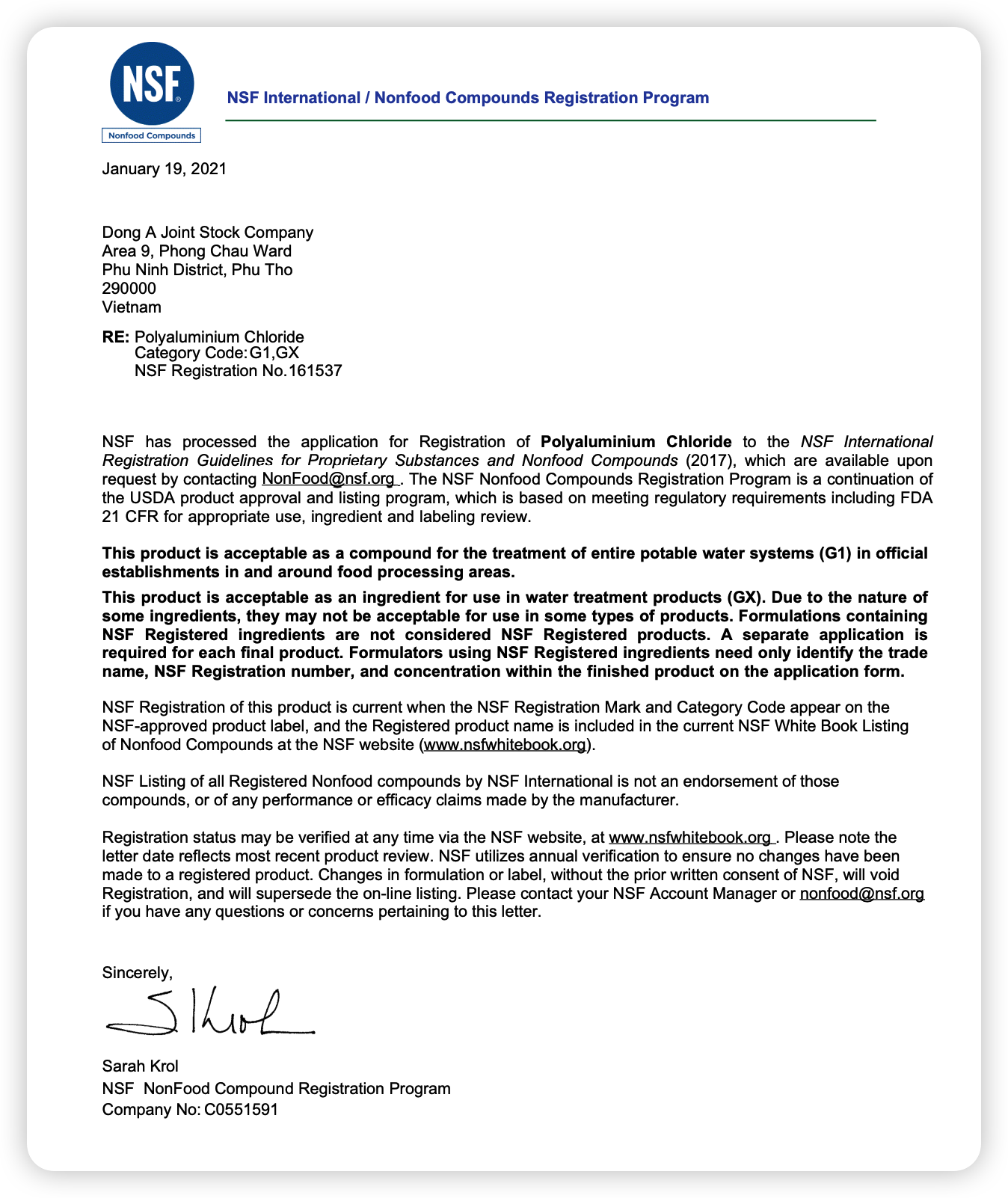With their 30% powdered PAC product, Dong A has registered and received NSF certification (belonging to the coagulants and flocculants sub-category of NSF). When this product is used directly in the treatment of drinking water, customers can consume it without any worries.
Humans are currently residing in an environment that is becoming more and more polluted, which has a significant negative impact on each person's health. We are surrounded by pollution of all kinds, mainly water contamination, but also pollution of the land, the air, the noise, and the light.
Freshwater is a finite resource, but it is becoming increasingly scarce due to pollution brought on by human activity, such as industrial wastewater containing heavy metals that is not properly or not at all treated, excessive pesticide use in agriculture, animal waste, or water leaking from landfills. They directly enter the lakes, rivers, streams, and ponds that serve as our primary water supplies.
Chemical businesses are studying and creating a wide variety of chemicals to more efficiently treat dirty water due to the pressing need to treat this water. Aluminum sulfate, ferric sulfate, or poly aluminum chloride are some of the compounds that are frequently employed in the treatment of water (PAC). Due to its superior qualities compared to conventional water treatment chemicals, PAC is becoming more and more well-liked. The quality of PAC is not consistent, which is a problem at the moment. The market currently offers a wide variety of PAC kinds, each with varying requirements and prices, which produce water treatment outcomes that are not always stable or safe.
Aware of these needs, Dong A Chemical has made significant efforts to manufacture PAC products that adhere to the international NSF standard for both efficient water treatment and health safety for both humans and animals, helping to build a sustainable and healthy water environment.
What is NSF?
NSF stands for the National Sanitation Foundation, an organization that collaborates on food and drinking water safety with the World Health Organization (WHO). It is one of three independent, non-governmental, and reputable certification organizations (along with the Water Quality Association and Underwriters Laboratories). Established in 1944, NSF is a non-profit, independent certification organization headed by WHO that tests and certifies products related to food, water, consumer goods, and the environment to ensure consumer safety and product efficacy as advertised by the manufacturer.
What are NSF standards?
NSF standards are known as benchmarks for evaluating product safety for users. To develop nationally unified standards based on consensus, NSF brings together regulatory agencies, industries, consumers, and public health experts. NSF scientists, engineers, and public health experts check these standards or protocols. Currently, NSF has over 75 national health and safety standards in operation, and 95 protocols published for household appliances, food equipment, water filtration systems, and other products. Products that meet these standards bear the NSF mark.
What is the NSF Non-food Compounds certification?
The NSF Non-food Compounds certification is a third-party independent assessment of proprietary and non-food compounds for use in food processing environments.
By showing that your product is NSF registered, you provide reliable assurance of safe water treatment chemicals for use in food processing.
Advantages of the Dong A PAC product:
- 4-5 times more efficient in coagulation and settling. It dissolves well and quickly in water.
- PAC does not significantly change the water pH, so less lime or alkali is needed, reducing equipment corrosion.
- PAC does not cause water turbidity when overdosed or underdosed.
- PAC does not require or only requires very little coagulant aid.
- The residual Al3+ content in water is lower than when using aluminum sulfate.
- Better ability to remove organic and inorganic substances and heavy metals.
- Does not generate a toxic amount of SO42- in treated wastewater.
- Low dosage, with large flocs that settle easily.
- Reduces sludge volume.
